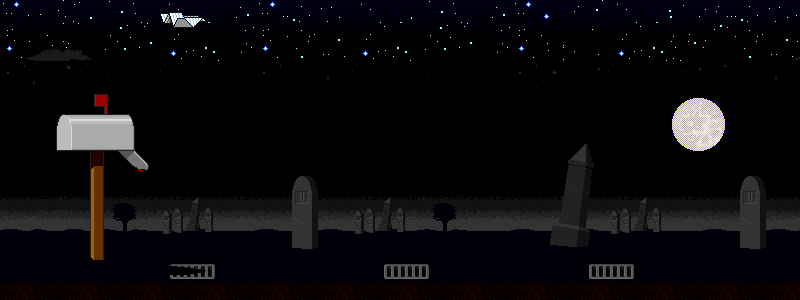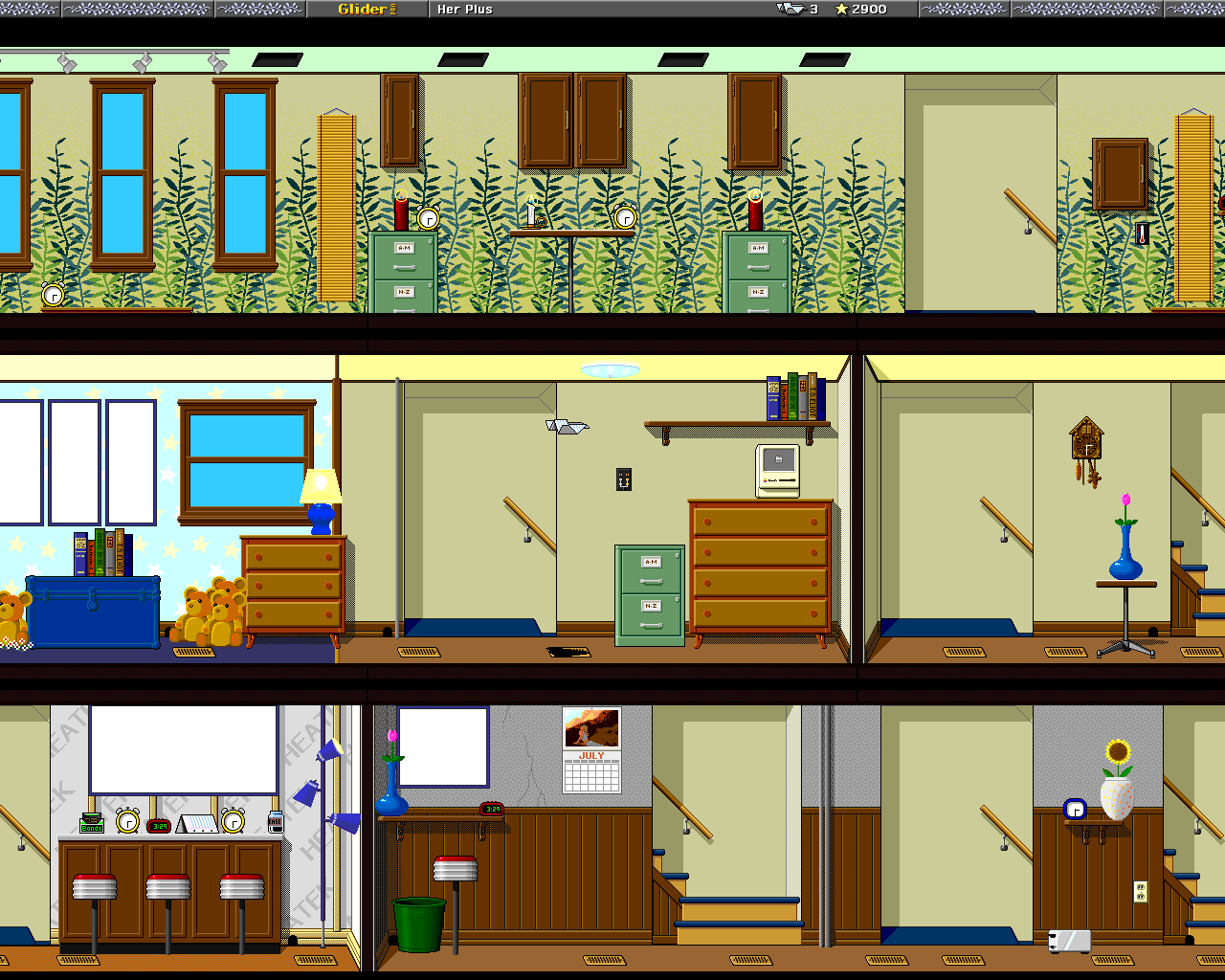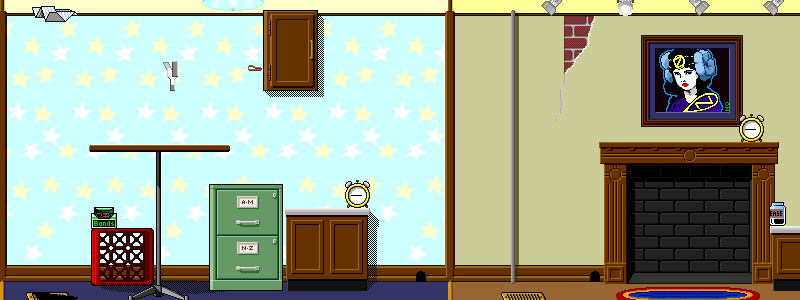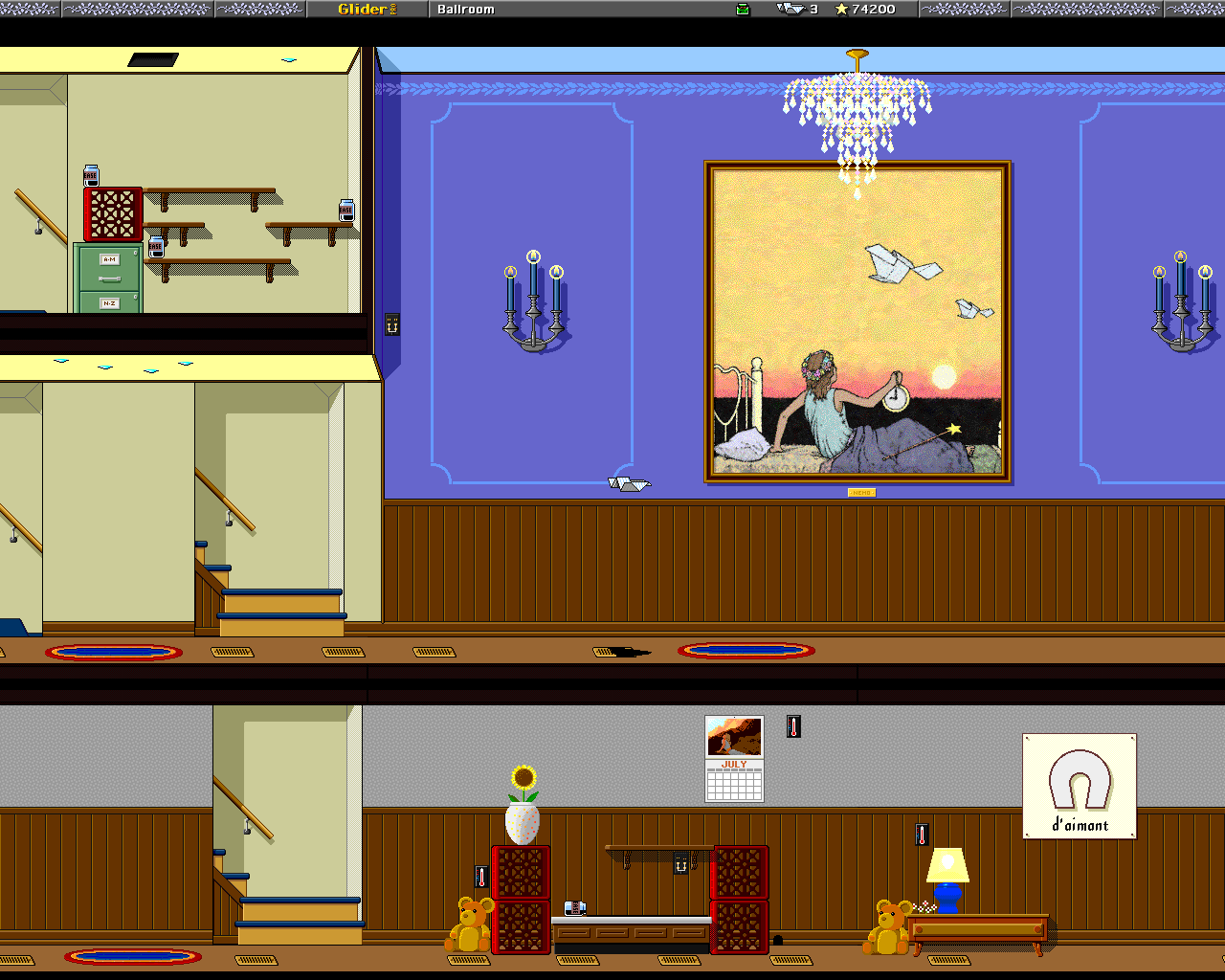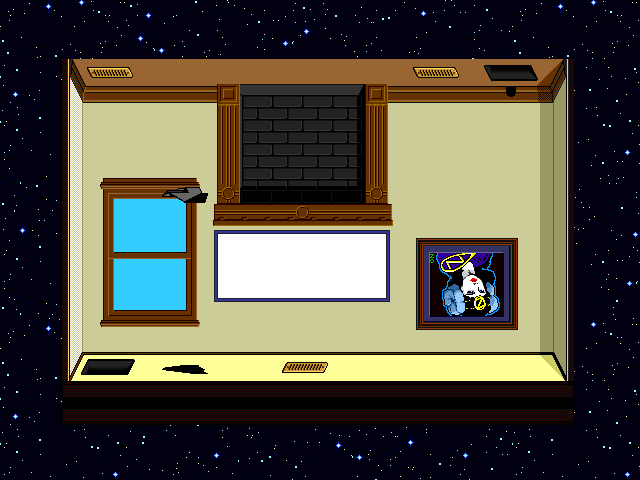Glider Pro – john calhoun - 1994 - First time playing?: Yes!
(Note: these screenshots are downscaled to better fit Radpage's site layout. Click on the screenshots to see them in their full resolution!)
"Glider Pro includes animated, real-time, arcade game features without the weighty responsibility of saving the hostages, destroying the death star, or trying to figure out what planet the hedgehog is really from." - Glider Pro's manual
I find this quote funny for multiple reasons. First off, you have to be pretty unironically invested in Sonic the Hedgehog lore to even be considering what planet he's actually from. But that's not the point, the quote is instead simply stating that Glider Pro is a simple and self explanatory casual game about controlling a paper aeroplane through obstacle courses where attention to cerebral storytelling and world building are not needed to understand the game.
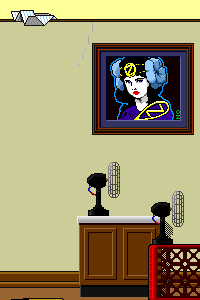 This is a lie. I have so many questions about Glider Pro. Who is this fairy lady at the start? Whose house is this? Who is the sorceress lady who is in countless framed photos on the wall and also possesses television sets? Is the paper plane you control sentient? If it isn't, who or what is controlling it? Is it the fairy? The sorceress? A tiny paper pilot inside the paper plane? Heck, coming full circle, what planet is this game on? After all, this is a world where looking into a mirror can turn reality upside down or entering a mailbox can send you to a graveyard pocket dimension. Or is this just earth but distorted by magic?
This is a lie. I have so many questions about Glider Pro. Who is this fairy lady at the start? Whose house is this? Who is the sorceress lady who is in countless framed photos on the wall and also possesses television sets? Is the paper plane you control sentient? If it isn't, who or what is controlling it? Is it the fairy? The sorceress? A tiny paper pilot inside the paper plane? Heck, coming full circle, what planet is this game on? After all, this is a world where looking into a mirror can turn reality upside down or entering a mailbox can send you to a graveyard pocket dimension. Or is this just earth but distorted by magic?
[UPDATE - 21st January 2024: Just a quick interjection here, past me is an uncultured idiot. The sorceress lady is clearly Ozma from The Marvelous Land of Oz, easily identifiable by the emblem on her headdress, keeping in theme with the Oz imagery throughout the rest of the game as well. My Oz experience at the time of writing is limited to watching a theatre play of Wizard of Oz one time as a human child unaware of his impending inevitable dollification so uh, oops. I'm sure more of the imagery makes more sense with further Oz knowledge than reading the TV Tropes page on it and I intend to read them down the line, but for now, my bad on this one.]
Nothing makes sense here. And honestly, that rules. The weird dreamy surreal vibe and atmosphere of Glider Pro is an absolute highlight of this game. Exploring this Wonderland-esque reality which is already surreal on its own, but then also exploring it through the lens of a paper aeroplane makes even the mundane aspects of Glider Pro feel unusual, from all the air vents and convection from lit candles being used to keep your plane airborne, to the hazards you encounter as well. I know it's literally a sheet of paper, but seeing the plane get ripped to pieces in a paper shredder or crash and burn when it's lit on fire is genuinely kind of horrifying. Or maybe I'm just a weirdo feeling empathy for, again, a sheet of paper.
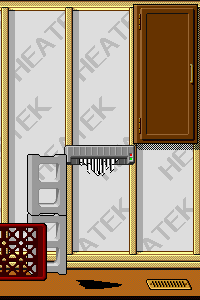 Glider made its start as a monochrome single screen platformer where you would control a paper airplane through a house, using updrafts to stay afloat. This was followed by Glider 2 and 3, both of which were the same game as Glider 1, just updated a little with better visuals and extra content. The series got its first true sequel with Glider 4, which expanded the scale of the game significantly with much more levels, better controls and a level editor. Following up its more linear (and unfortunately OS 9 incompatible) predecessors, Glider Pro is the sequel to Glider 4 and is essentially expands the scope even further to an exploration driven platformer made of hundreds of single screen rooms connected to one another, much like Montezuma's Revenge, Jet Set Willy, or the previously reviewed Monkey Shines. Your objective is to find and collect all of the stars hidden in the level, the game being completed once you've gotten them all. Where the Glider series varies from the other examples I gave however is in the method of controlling your character. Your paper glider can only move left or right, and if it crashes into a wall or the floor then that's a life lost. As a result, you need to keep your glider afloat via usage of air vents, gusts of winds, even some unconventional things such as the static generated by CRT monitors can be enough to keep you airborne. In a way, it's a puzzle platformer, with the puzzle being figuring out how to work around your control limitations and use your environment to your advantage.
Glider made its start as a monochrome single screen platformer where you would control a paper airplane through a house, using updrafts to stay afloat. This was followed by Glider 2 and 3, both of which were the same game as Glider 1, just updated a little with better visuals and extra content. The series got its first true sequel with Glider 4, which expanded the scale of the game significantly with much more levels, better controls and a level editor. Following up its more linear (and unfortunately OS 9 incompatible) predecessors, Glider Pro is the sequel to Glider 4 and is essentially expands the scope even further to an exploration driven platformer made of hundreds of single screen rooms connected to one another, much like Montezuma's Revenge, Jet Set Willy, or the previously reviewed Monkey Shines. Your objective is to find and collect all of the stars hidden in the level, the game being completed once you've gotten them all. Where the Glider series varies from the other examples I gave however is in the method of controlling your character. Your paper glider can only move left or right, and if it crashes into a wall or the floor then that's a life lost. As a result, you need to keep your glider afloat via usage of air vents, gusts of winds, even some unconventional things such as the static generated by CRT monitors can be enough to keep you airborne. In a way, it's a puzzle platformer, with the puzzle being figuring out how to work around your control limitations and use your environment to your advantage.
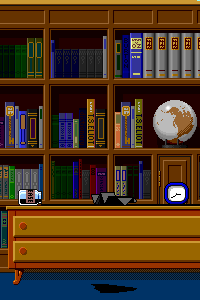 In addition to your basic movement controls, you also have power-ups which can be used for puzzle solving and further exploration. Rubber bands are projectiles which you can fire to destroy hazards and flip switches from a distance. Batteries give you a speed boost when activated, allowing you to glide further distances. Finally, there's tinfoil which gives your glider improved defences, protects you from most hazards and even allows you to bypass the dreaded paper shredders. All of these power-ups are finite, fling too many rubber bands and you'll run out, boost too much with the battery and it will run dry, and taking too much damage will destroy your tinfoil coating.
In addition to your basic movement controls, you also have power-ups which can be used for puzzle solving and further exploration. Rubber bands are projectiles which you can fire to destroy hazards and flip switches from a distance. Batteries give you a speed boost when activated, allowing you to glide further distances. Finally, there's tinfoil which gives your glider improved defences, protects you from most hazards and even allows you to bypass the dreaded paper shredders. All of these power-ups are finite, fling too many rubber bands and you'll run out, boost too much with the battery and it will run dry, and taking too much damage will destroy your tinfoil coating.
Honestly, I'm still torn on whether I like Glider Pro or not. It's a unique concept well executed that I absolutely recommend trying out, don't get me wrong, it's a retro Mac classic for a reason, but I think there's a part of me that respects it more than I enjoy actually playing it. As much as I love the atmosphere and creative premise and find it compelling enough to revisit, I do find it a fairly frustrating game to play a lot of the time. It's very easy to crash your glider very quickly, and with extremely limited lives you don't have much room for error. Monkey Shines also has one hit kills and limited lives, I'm aware, but at least lightly tapping a wall doesn't kill you in Monkey Shines.
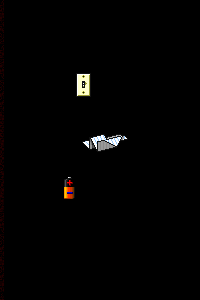 My issues with Glider Pro may come off as whining about it being too hard, but I think the unforgiving nature of it is more my issue. Using power-ups when you don't need them can make the game unwinnable, important rooms that you need to visit in order to get a star required to win the game can be missed entirely and the game doesn't allow you to backtrack due to the lack of updrafts to get you back there, once again making the game unwinnable, and all the while you're also having to deal with puzzle solving that can often involve simply making an educated guess that could kill you if you're wrong about your hunch. While the game is explorative and rewards you with points and extra lives for going off the beaten path, the actual progression of getting the stars is very linear with you having to do everything in the order the game expects you to, with deviation potentially resulting in softlocks. There's also a decent amount of trial and error in there too, it can be hard to tell what is part of the foreground and background, especially with the shadow your glider casts implying that it's far further towards the screen than much of the furniture it can crash into, and furthermore sometimes you're thrown into rooms where you're not even allowed to see the furniture you're meant to be dodging because the lights are turned off.
My issues with Glider Pro may come off as whining about it being too hard, but I think the unforgiving nature of it is more my issue. Using power-ups when you don't need them can make the game unwinnable, important rooms that you need to visit in order to get a star required to win the game can be missed entirely and the game doesn't allow you to backtrack due to the lack of updrafts to get you back there, once again making the game unwinnable, and all the while you're also having to deal with puzzle solving that can often involve simply making an educated guess that could kill you if you're wrong about your hunch. While the game is explorative and rewards you with points and extra lives for going off the beaten path, the actual progression of getting the stars is very linear with you having to do everything in the order the game expects you to, with deviation potentially resulting in softlocks. There's also a decent amount of trial and error in there too, it can be hard to tell what is part of the foreground and background, especially with the shadow your glider casts implying that it's far further towards the screen than much of the furniture it can crash into, and furthermore sometimes you're thrown into rooms where you're not even allowed to see the furniture you're meant to be dodging because the lights are turned off.
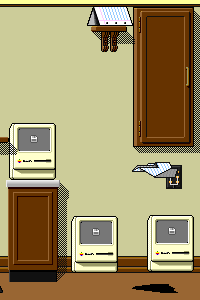 Just the act of figuring out where the updrafts in a level is can be a maddening process of do-or-die trial and error. Updrafts aren't visualised at all, there's no sprite of a gust of wind or anything to let you know if you move your glider there you'll ascend, you just have to guess where the updrafts are based on vents and flames and chimneys. None of these sprites however guarantee that there will be an updraft there. Air vents for instance may be turned off and won't be blowing any gusts of wind to keep you off the ground unless you turn on an unmarked thermostat somewhere else in the house, often in a completely unrelated room. There's no indication of what air vent is effected by you switching on a thermometer and there's also no visual difference between an air duct that is turned on versus an air duct that is turned off, the only way to be sure is to just fly above the air duct and see if you die or not. It's also possible that the air duct is active but it's only blowing a very weak updraft that only lifts you up a few pixels above the floor, which once again, you're not going to know unless you're already grazing the instant death floor. This goes for everything else in the game that can give you an updraft too. Sometimes turned on computer monitors will give off an updraft to keep your glider from crashing onto it, other times identical turned on monitors will not and you'll lose a life thinking you're safe on top of it when you're not. All of the levels being created by a wide variety of designers doesn't help either, as everyone has their own rules on what is or is not considered an updraft.
Just the act of figuring out where the updrafts in a level is can be a maddening process of do-or-die trial and error. Updrafts aren't visualised at all, there's no sprite of a gust of wind or anything to let you know if you move your glider there you'll ascend, you just have to guess where the updrafts are based on vents and flames and chimneys. None of these sprites however guarantee that there will be an updraft there. Air vents for instance may be turned off and won't be blowing any gusts of wind to keep you off the ground unless you turn on an unmarked thermostat somewhere else in the house, often in a completely unrelated room. There's no indication of what air vent is effected by you switching on a thermometer and there's also no visual difference between an air duct that is turned on versus an air duct that is turned off, the only way to be sure is to just fly above the air duct and see if you die or not. It's also possible that the air duct is active but it's only blowing a very weak updraft that only lifts you up a few pixels above the floor, which once again, you're not going to know unless you're already grazing the instant death floor. This goes for everything else in the game that can give you an updraft too. Sometimes turned on computer monitors will give off an updraft to keep your glider from crashing onto it, other times identical turned on monitors will not and you'll lose a life thinking you're safe on top of it when you're not. All of the levels being created by a wide variety of designers doesn't help either, as everyone has their own rules on what is or is not considered an updraft.
I really do think that without the constant threat of running out of lives, Glider Pro would be nowhere near as frustrating. You'd have more freedom to experiment and figure things out without the threat of losing all of your progress in an utterly massive level. Thankfully, there is an option to help with that, as Glider features a save system that allows you to make a save file at any point and anywhere mid-game and reload that save at that exact same spot, much like Doom's save system. Reloading a save is a little clunky since you have to go back to the title screen, there's no in-game quick load command or anything which feels sluggish, but it makes the game much more approachable regardless. You are however disqualified from the high score table if you're using a saved game, giving incentive to practise until you can beat the level without saving, as I ended up doing.
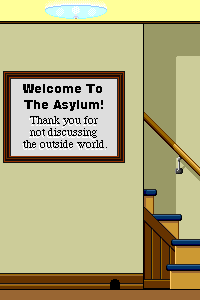 The base game of Glider Pro consists of two levels, a short tutorial and the main game, called Slumberland. Even though it's a single level, it is a very big level with lots to explore and see. Later releases of Glider Pro however, such as the retail CD release, include a wide selection of additional levels made by fans, giving the game a ton of content. Then of course, there's hundreds more levels out there to play thanks to the level editor included with Glider Pro, resulting in tons of fans sharing their creations online. If you're into Glider Pro then you'll find a wealth of content and longevity here.
The base game of Glider Pro consists of two levels, a short tutorial and the main game, called Slumberland. Even though it's a single level, it is a very big level with lots to explore and see. Later releases of Glider Pro however, such as the retail CD release, include a wide selection of additional levels made by fans, giving the game a ton of content. Then of course, there's hundreds more levels out there to play thanks to the level editor included with Glider Pro, resulting in tons of fans sharing their creations online. If you're into Glider Pro then you'll find a wealth of content and longevity here.
Again, in spite of my frustrations, I actually do recommend checking out Glider Pro. There is something compelling here that keeps me coming back and it's unique enough that it's worth trying just because you're not likely to play much else like it. Getting good at the game is satisfying, once you're able to rack up extra lives, know where the secret rooms are and aren't having your flow broken by reloading saves it feels rewarding and fun. The controls are good and the power-ups give you a lot of extra options to consider when making your way through levels. It is a surprisingly rough uphill battle getting to that point however, in spite of the simple mechanics. Even when you've mastered the mechanics, a new level can still throw you some curveballs with puzzles and trying to figure out what thermostats affect what air vents and so on. Whether that struggle is worth it will vary from player to player, but I’m glad I played Glider Pro. I liked it, just maybe not enough to play the massive wealth of user-made levels out there.
Fun fact to close this with, pay attention to the collectable clocks in-game if you play this. They’re actually functional clocks, displaying the same time as your computer’s system clock!
- Page written by MSX_POCKY, 12th July 2023, updated 21st January 2024

